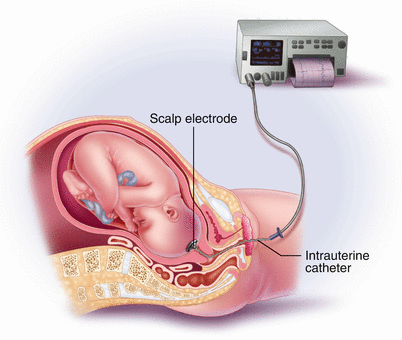On the 16th of October 1992 I had a FSE inserted because I had pre-eclampsia. I was 20 years old and pregnant with my first child and was not told what it was, what it did or the risks and benefits of using it. I am grateful to be given the opportunity to research and write an essay about this, so I know what happened to me (and my baby girl) 30 years ago! I remember a student doctor entered the room at KEMH. I wasn’t asked but told that he would attempt to put a monitor on my baby’s head.
During childbirth, healthcare providers may use a Foetal Scalp Electrode (FSE) to monitor the well-being of the baby to ensure a safe delivery. It is often referred to as the “little clip”. This type of electrode is sometimes called a spiral or scalp electrode. Parents are often surprised to find out that the monitor that was attached to their baby’s head during labour wasn’t just “a clip” as it was referred to, or a sticker, but instead a metal screw that went into the scalp.
Let’s talk about what the FSE is, how it is attached, how it looks, and the associated risks and benefits to help people gain an understanding of this monitoring tool.
What is Foetal Scalp Electrode (FSE)?
It is a medical device designed to measure the baby’s heart rate more accurately during labour. It is a small, thin, and flexible electrode attached directly to the baby’s scalp. The FSE allows continuous monitoring of the baby’s heart rate and provides real-time feedback to healthcare providers.
How is FSE attached?
It is known to be relatively straightforward and done by a healthcare provider. These are the typical steps:
- When is it used: The FSE will be recommended if there are concerns about the wellbeing of the baby and how they will cope during labour, or to monitor signs of distress, particularly if external monitoring is not providing enough information. It is an invasive option and should only be used as a last resort to get critical data on the wellbeing of the baby.
- Cervical examination: This is to determine the baby’s position and assess the cervix’s dilation, which needs to be a minimum of 2cm – 3cm dilated. The health care provider will artificially rupture the amniotic membranes (the “bag of water” surrounding the baby) if they have not already released to facilitate with the FSE’s attachment.
- Attachment: A wire electrode is “gently” inserted through the vagina and cervical opening and attached to the foetal scalp (or buttock if in breech). The electrode is carefully “screwed” into the baby’s scalp, ensuring that it is not over the fontanels, face or genitalia and correct positioning ensures accurate readings.
- Continuous Monitoring: Once attached, the FSE is connected to the electronic monitoring system, enabling continuous tracking of the baby’s heart rate throughout labour and delivery and giving the mum flexibility to move around freely.

Another example of a Foetal Scalp Electrode can be found here:
Rocket Copeland Fetal Scalp Electrode – Philips type (rocketmedical.com)
What are the risks and benefits of using FSE?
Like any medical intervention FSE comes with both risks and benefits. To understand these, make sure you ask questions like your BRAIN analogy so you can make informed decisions during childbirth.
Benefits:
- Accurate Monitoring: It is considered to provide more accurate data, allowing healthcare providers to identify any distress quickly.
- Informed Decision-making: Data collected helps healthcare providers make recommendations about the best course of action.
- Reduced Need for Repeated Monitoring: Reduces the need for frequent manual checks, allowing mother to be uninterrupted.
Risks:
- Discomfort: The insertion process of the FSE may cause discomfort to the mother and is invasive.
- Infection and neonatal sepsis.
- Scalp abscess.
- Bleeding or bruising on the baby’s scalp.
- Injury to the baby’s scalp or other body parts (e.g. eyelid laceration).
- A cephalohematoma, which is an accumulation of blood under the scalp.
- Electronic foetal monitoring is limited in its capacity to predict neonatal condition and has failed to lead to reduced rates of cerebral palsy and neurological injury.
Here is a link from AIMS that talks through various foetal monitoring in labour.
Conclusion:
The Foetal Scalp Electrode is a valuable tool that allows healthcare providers to closely monitor the baby’s heart rate during labour, helping to ensure a safe and successful delivery. It may enable medical professionals to make timely decisions and provide appropriate care. While there are potential risks associated with FSE, these are generally rare and carefully managed. As always, open communication with your healthcare provider about any concerns or preferences is important to make the birthing experience as smooth and as positive as possible.
However, keep in mind that this is yet another intervention and it is up to the woman to ask all the right questions to get all the information she needs to make an informed choice – there is no right or wrong choice, just what is right for the woman and her circumstances. To learn more about continuous monitoring an excellent resource is Kirsten Small’s – Birth Small Talk website and courses:
My name is Michelle McKechnie, based in Perth and I am a doula who has completed the extensive training course at the Doula Training Academy with Vicki Hobbs. If you would like to talk more about your birthing options, please contact me:
Business Name:
Perth Doula Services
Business Email:
[email protected]
Phone:
0419 571 387
Facebook Link:
https://www.facebook.com/PERTHDOULASERVICES
Instagram Link:
https://www.instagram.com/perthdoulaservices/
REFERENCES:
Fetal Electrode Application (nsw.gov.au)
Family Medicine Education Modules – Placement Procedure (google.com)
Fetal monitoring in labour: summary and update of NICE guidance | The BMJ

